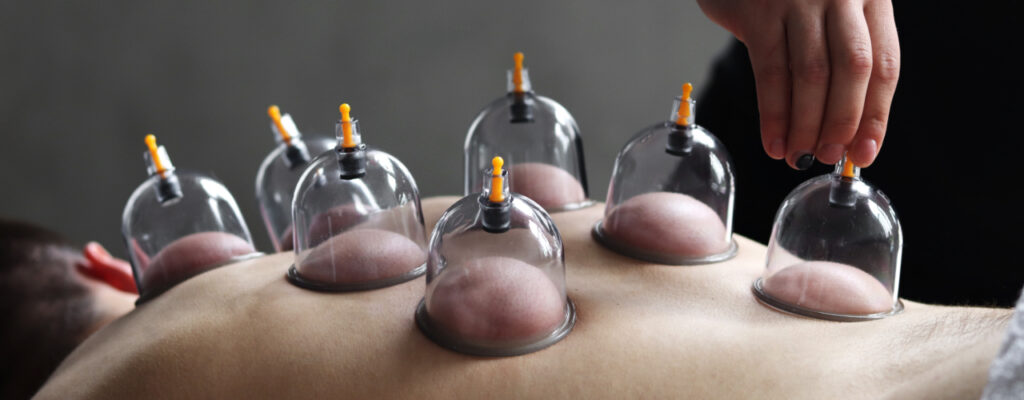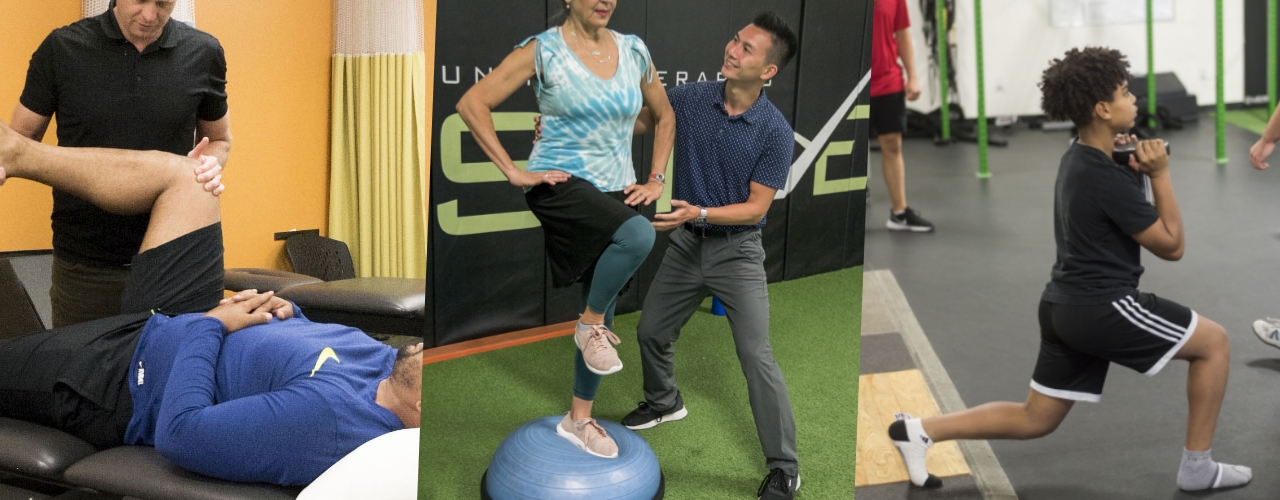Cupping Therapy


What is Cupping Therapy?
Cupping therapy is an ancient form of medicine that stems from ancient Asian, European, and Middle Eastern countries. This technique uses cups (typically glass, plastic, or silicone) to create a negative pressure (suction) on areas of the body to alleviate pain and manipulate tissue.
Cupping trained therapists may utilize a static technique (leaving the cups in a spot for ~5 minutes) or a dynamic technique where the patient moves in a specific way while under suction. It is one of the many “tools” your therapist may offer as part of your individualized treatment plan.
If you are seeking treatment and feel Cupping Therapy might help you, book below with Physiotherapist Preston Tran
How Does It Help You?
Different people will respond differently to this form of treatment, but it is another option for some people! It can help via:
- Negative Pressure – Instead of applying more compression via massage, cupping uses negative pressure to lift up tissue thus providing a different stimulus to the body, which can work really well if your body has adapted to deep tissue work. It can also lift up tissue that may be “stuck” together or draw out debris or fluid that is trapped within soft tissue and bring it back into normal circulation.
- Vasodilation – Widening of blood vessels to increase circulation in an area to promote healing. Tissues need blood to heal and move optimally.
- Improves Range of Motion – stimulates nerve endings within the muscles to decrease nerve activity that is keeping your muscles in a state of contraction. Cupping allows your muscles to move more freely throughout its range of motion
Athletes benefit greatly from this form of treatment as it helps their muscles perform optimally for competitions and for training. Reduced range of motion inhibits performance and tight muscles make your muscles have to work harder, thus making you fatigue faster.
Same goes for the general public, feeling and moving your best enhances your quality of life and helps you do everyday tasks without feeling fatigued so quickly.
What are the Marks that are Left Behind?
You will notice little pepperoni type marks left behind after the treatment, which can last for a few days to a week or two. It is not bruising as some people may call it. It is not tender to the touch as a bruise would be. The mark is the result of the negative pressure releasing old blood and other toxins that have build up in the area. The darker the mark the more stagnant the blood is in that area and the more toxins you may have that is being brought closer to the surface of your skin to be released naturally.
Common Conditions Cupping is used for
- Regular muscle tightness
- Whiplash
- Chronic pain and tightness
- Stress
- Back pain
- IT Band Pain
- Plantar fasciitis
- Many others!

Precautions to Cupping
If you have your own cups and choose to perform this technique on yourself:
- Avoid using it if you are on blood thinners or have frail/thin skin
- Avoid using it over sensitive areas like the front of the neck, groin, or armpit
- Avoid using over recent injuries, bruises, and open wounds (for at least 4 weeks)
- Avoid using if you have specific medical conditions such as diabetes, oncology patients, or others conditions that affect healing time
- Avoid steam rooms or hot tubs for a few hours after cupping
There are few other endangerment sites, check with your local health provider to determine if this treatment is appropriate for you!
If you are seeking treatment and feel Cupping Therapy might help you, book below with Physiotherapist Preston Tran

